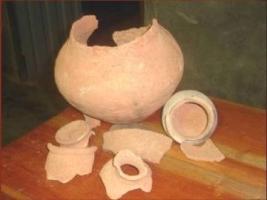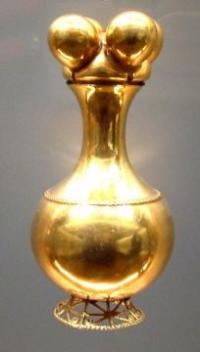Copy Link
Add to Bookmark
Report
HOMEBREW Digest #1948

This file received at Hops.Stanford.EDU 1996/01/30 PST
HOMEBREW Digest #1948 Tue 30 January 1996
FORUM ON BEER, HOMEBREWING, AND RELATED ISSUES
Rob Gardner, Digest Janitor
Contents:
Plastic Boilers, Electric Brewery (LaBorde, Ronald)
Pronunciation.... ("Pat Babcock")
re: Hot break/Cold break (Denis Barsalo)
cider (jonesmd)
Metallized Bubble Wrap (C.D. Pritchard)
Pitching routine (blacksab)
Cider Draft, Yeast Farms, GFI's (HuskerRed)
Oxygenator ("Thomas A. Wideman")
PU no longer brewed in wood? (STROUDS)
cheers (The Wallinger Family)
Health effects of "Green Beer"/Yeast trub ("David C. Rinker")
Homebrew (Andrei Ohlmus)
Heater Pads & Autolysis (Charlie Scandrett)
Hardy Country Bitter (Jeff Hewit)
Carageen Mould (Mold) (Hugh Graham)
Freezing yeast (Joel King)
RIMS Plans (Jeff Hewit)
Electric Brewery (LaBorde, Ronald)
Slow sparge/ Lauter FAQ Part A (Charlie Scandrett)
Beer Cruise (Big Dog Brewing)
white yeast and aeration (Rob Lauriston)
cornelius sanitation, counterflow cleaning, copper ion precipitates (Capt Hawkins)
Dave's gnats (CLAY)
Bayou Classic burner (Barry M Wertheimer)
RE:Cornstarch Beer-mash schedule question. ("Frederick L. Pauly")
Lauter FAQ Extract "B" (Charlie Scandrett)
"Covered Open"=Closed, so skim from your primary bucket (Brian Pickerill)
First kegging (avs)
Oktoberfest (Ray Ownby)
******************************************************************
* POLICY NOTE: Due to the incredible volume of bouncing mail,
* I am going to have to start removing addresses from the list
* that cause ongoing problems. In particular, if your mailbox
* is full or your account over quota, and this results in bounced
* mail, your address will be removed from the list after a few days.
*
* If you use a 'vacation' program, please be sure that it only
* sends a automated reply to homebrew-request *once*. If I get
* more than one, then I'll delete your address from the list.
******************************************************************
#################################################################
#
# YET ANOTHER NEW FEDERAL REGULATION: if you are UNSUBSCRIBING from the
# digest, please make sure you send your request to the same service
# provider that you sent your subscription request!!! I am now receiving
# many unsubscribe requests that do not match any address on my mailing
# list, and effective immediately I will be silently deleting such
# requests.
#
#################################################################
NOTE NEW HOMEBREW ADDRESS hpfcmgw!
Send articles for __publication_only__ to homebrew@hpfcmgw.fc.hp.com
(Articles are published in the order they are received.)
Send UNSUBSCRIBE and all other requests, ie, address change, etc.,
to homebrew-request@hpfcmgw.fc.hp.com, BUT PLEASE NOTE that if
you subscribed via the BITNET listserver (BEER-L@UA1VM.UA.EDU),
then you MUST unsubscribe the same way!
If your account is being deleted, please be courteous and unsubscribe first.
Please don't send me requests for back issues - you will be silently ignored.
For "Cat's Meow" information, send mail to lutzen@alpha.rollanet.org
ARCHIVES:
An archive of previous issues of this digest, as well as other beer
related information can be accessed via anonymous ftp at
ftp.stanford.edu. Use ftp to log in as anonymous and give your full
e-mail address as the password, look under the directory
/pub/clubs/homebrew/beer directory. AFS users can find it under
/afs/ir.stanford.edu/ftp/pub/clubs/homebrew/beer. If you do not have
ftp capability you may access the files via e-mail using the ftpmail
service at gatekeeper.dec.com. For information about this service,
send an e-mail message to ftpmail@gatekeeper.dec.com with the word
"help" (without the quotes) in the body of the message.
----------------------------------------------------------------------
Date: Fri, 26 Jan 96 23:56:14 -0600
From: rlabor@lsumc.edu (LaBorde, Ronald)
Subject: Plastic Boilers, Electric Brewery
>from: DONBREW@aol.com
>
> ... Why not use a control from an electric
>stovetop? They work on the same principle, but mechanical instead of
>electrical. They have a bi-metal strip with a heater coil on it so that the
>contact goes intermittently at a rate determined by how far the contact has
>to move.
> However, I am a gadget head so your idea does appeal to me. FWIW a stove
>control costs about $25 or can be had off of an old stove for free. How much
>do think your circuit might cost?
>
>Don
Glad you pointed up the stovetop control idea. I sort of forgot about that.
Or maybee I was concerned about stress on the element because of full on/off
power and all the thermal shock. I may give it a try as I do think it will be
the easiest and least expensive method to control the heater element.
Scorching hasn't been a problem with my setup so I guess full on/off may be
fine.
The SSR will cost about $26.50, the dimmer about $5.00. The box and wires and
bridge rectifier a few dollars. I guess the whole thing could be built for
$50.00 or less.
One thing I did not mention was that eventually the dimmer could be controlled
by simply adding a photo-optical variable resistor (or whatever it's called)
across the potentiometer in the dimmer. This would allow electronic control by
using a temperature sensor and a controller of some kind. I guess I just like
to tinker and it seems like fun to be able to control that 4500 watts with
electronics.
P.S. Today 01-26-96 I have bench wired and tested the SSR controller and it
works. I am planing to test it under full load tomorrow.
>from: Geza T Szenes/IPL <Geza_T_Szenes/IPL.IPL@notes.ipl.ca>
>
>I have read your posting in the HB Digest regarding the boiler in a plastic
>bucket. This is something I have also been considering, but I need some more
>info, and a more complete idea of the construction:
>
>1. how far from the bottom is the heating element?
>
I mounted it about 2 inches from the bottom. The closer the better but leave
enough room in case the element tends to sag. You do not want the element to
touch the bottom.
>2. how do you mount it on the plastic so that there are no leaks? What
kind of
>hardware to do this?
>
Drill a hole. I used the paddle type bits made for wood. Works very well to
drill the plastic.
>3. how do you wire it to a cord so you can plug it in?
>
The element has two screw terminals built in.
>4. are there 110 volt versions of these heating element available? Where is a
>good place to get these water heating elements? Can I use something like a
>stove heating element, but how would it be mounted?
>
Yes 110 volt versions do exist. I got mine from heating-plumbing department
of Home Depot. Any good hardware store should also have it. There are two
versions one is mounted through a single 1.25 inch hole. The other uses a
square flange. Get the one that mounts through a single hole. Should pay
about $10.00 for it.
>5. What would be the minimum watts required to work in a 110 volt set up? ( I
>would only boil about 6-7 gallons to make a 5 gallon batch, and I would not
>need as vigourous a boil as you describe)
>
You may find a 1500 watt for 110 volts. But I don't know if it would be
enough to attain a boil. If you insulated the bucket with the foil coated
bubble wrap it probably would be enough power to do the boil.
Also if you insist on 110 volts - have a good supply of fuses on hand. This
will put a good strain on your wiring and any additional loads on the
circuit will
have you quite friendly with your fuse box.
>From: KennyEddy@aol.com
>Subject: Plastic Electric Brewery
>
>A much simpler approach might be to make any of a number of parallel and
>series combinations of *many* elements (they're fairly cheap) with simple
>switches across them. Throwing the switches in various combinations would
>generate different power levels. High heat to initiate boiling, lower heat
>to maintain it, that sort of thing. Also, reducing the overall power while
>"spreading out" the power distribution results in lower power densities and
>diminished worrying about scorching. While not continuously variable like a
>light dimmer would be, it would at least offer three or four levels and might
>be completely adequate.
Yes I considered multi elements but the picture in my mind was like those pots
used for planting strawberrys with holes all over the sides (oooh! shudder).
>The compatibility of the various plastics with boiling temperatures is a
>concern and if anyone has information in addition to DonBrew's figures I'd be
>interested to hear about it. Also, whether "plastic taste" might somehow be
>imparted by using plastic for boiling wuold be a question. A lightly-hopped
The first thing I did was to boil up some water for about two hours, cool it
and then taste it. Yumm, good water with no off taste.
I figured if any plastic taste leeched through that it would affect the LME
that was stored in it so that's why I thought the LME container was safe.
>From: Matt_K@ceo.sts-systems.ca
>Subject: Electric Brewery
>
>Controllers for stove top elements work just as well for hot water
>emelents. They are cheap (<$20), readily available at Hoem Depot etc.
> (or off old stoves) and easy to install. Just make sure that the
>amps drawn by the element aren't too high. The controllers I found
>were rated to 20 amps at 220V, so they should be good up to 4400W.
>
>I have been using one on my keg for the last 1.5 years and it works
>great.
>
If you are not considering any form of automatic control then yes, I think
you just can't beat the stovetop controll.
Ronald J. La Borde "Never wrestle with a pig. You'll both
Metairie, LA get dirty, and the pig enjoys it."
------------------------------
Date: Sat, 27 Jan 1996 07:44:58 +0500
From: "Pat Babcock" <pbabcock@oeonline.com>
Subject: Pronunciation....
Greetings, Beerlings! Take me to your lager...
Just a curiousity: I've heard the word diacetyl pronounced three
different ways. die-UH-set-ul where the "cet" is pronounced like
the one in acetylene (my personal favorite), Die-UH-seet-il where
the "cet" is pronounced like the one in acetic, and Die-ASS-it-il
where the - well, you get the picture...
My curiosity is this: how many pronounce it each way? Where are you
from? Is this a regional thing? And, finally, does anyone have a
dictionary entry or the like showing the "correct" pronunciation.
Let's treat the first three as a "survey", and the last as a bonus
question. Private e-mail, please - I'll summarize.
See ya!
Pat Babcock in Canton, Michigan (Western Suburb of Detroit)
pbabcock@oeonline.com URL: http://oeonline.com/~pbabcock/
Sysop: HomeBrew University - Motor City Campus
(313)397-7915 8,n,1, 24 hours daily. Immediate and
full access at initial logon!
------------------------------
Date: Sat, 27 Jan 1996 08:02:37 -0500
From: denisb@CAM.ORG (Denis Barsalo)
Subject: re: Hot break/Cold break
In HBD #1946 John Wilkinson said:
> How do I get rid of hot break or cold break?
Now I know there are as many ways to do this as there are ways to
brew so I can only comment on the method I've been using.
After I finish boiling my 6 or so gallons of wort, I whirlpool the
hops and I siphon the wort through a round copper manifold and a CF
chiller into a bucket. This leaves behind lots of hot break material, most
of it clinging to the spent hops.
I seal the bucket and let it sit for a couple of hours. By then,
there is a definate "layer" of cold break material on the bottom. I then
rack off it to a carboy, pitch and ferment as usual.
This method worked great with a couple of lagers that I've brewed
recently. Seeing how lagers take a little longer to ferment, and spend a
bit more time in the primary, I wanted to remove as much break material as
possible.
With ales, I usually don't bother with the cold break removal. I
pitch in the first bucket, then rack to a secondary 3 or 4 days after
fermenting in the primary.
What do others do?
Denis
------------------------------
Date: Sat, 27 Jan 1996 07:22:12 -0600 (CST)
From: jonesmd@SLUVCA.SLU.EDU
Subject: cider
While it may not be strictly proper to inquire about this here, I do
wonder if anyone could provide me with a decent recipe for a dry cider
(along the lines of Woodpecker or Dry Blackthorn). The American
varieties which have recently hit the market in this area are syrupy and
disappointing, and the imports frankly cost too much. I would be most
grateful.
Mark
------------------------------
Date: Sat, 27 Jan 96 09:16 EST
From: cdp@chattanooga.net (C.D. Pritchard)
Subject: Metallized Bubble Wrap
John Plamer posted in HBD 1943:
>Metallized Bubble Wrap:
>I used this around my Mash Keg. It does indeed succomb to temps above 180F. The
>lower 4-5 inches has shriveled from the heat of the burner in the year that its
>been on there. I think it helps a little bit, but there are probably better
>insulating materials.
I investigated this material as a retrofit insulation material on a project
at work and did a bit of burn testing. I've done a fair amount of testing
and this stuff is downright scarry when it burns. The plastic bubbles
present alot of fuel surface area and the flame front often races through
the material much faster then one might expect due to the channeling effect
of the alumimum facings. The material is very easily ignited at raw edges
where the plastic bubble material is exposed and fairly easily ignited
through the aluminum facing.
DO NOT USE IT ANYWHERE NEAR A FLAME!
I use it to insulate my RIMS. After 2 batches and 2 wet runs w/o grain, the
only degradation is a discoloration of the aluminum around the RIMS lid-
probably due to acid vapors from the mash. I also use it around my
internally heated sparge water tank (170 degF) and haven't noticed anything
untoward.
For high temps, the best stuff is ceramic fiber insulation (e.g. Cerafiber-
no connection ect...). Kinda pricey tho'.
C.D. Pritchard cdp@chattanooga.net
------------------------------
Date: Sat, 27 Jan 1996 10:36:16 -0600
From: blacksab@siu.edu
Subject: Pitching routine
Hello all! I've changed my pitching routine somewhat because I'm getting a
massive cold break from my CF wort chiller, and I'd like to have my
technique critiqued by the collective. What I'm doing is to transfer the
chilled wort (~45*F) to a carboy overnight in order to settle the cold break
and for the temperature to raise to 60-65*F. Then I rack to a primary, and
pitch my yeast in the morning. Let me say that so far, I've had no problems
and I've had some of the shortest lag phases ever. But since I just started
doing this (2 batches), I haven't tasted any beer yet. Here goes:
1. I start with a 1-qt. starter just after high kraeusen.
2. I have a ~40-ft. counterflow wort chiller that is able to cool the wort
to ~45*F.
3. I fill, soak, and then evacuate Iodophor from a clean carboy with CO2
using one of those orange carboy caps with a gas connection on the long
tube, and a racking cane on the other. (I've got a narrow-range secondary
regulator that will hold the pressure at 2 o 3 lbs.)
4. Now, before I start filling the CO2-purged carboy, I transfer my 1-qt.
starter to a 1-gal. jug, and use the first runnings from the WC to fill it
with brewing wort to acclimate my yeast to the specific wort I'm going to be
brewing with. When filled, I put on an airlock and set aside.
5. Now I'm ready to chill the wort. I switch carboy caps and insert a
different racking cane that reaches all the way down to the bottom of the
carboy. This in turn is attached to my pump which is on the cold side of the
WC. When I turn on the pump (I control it with a fan motor controller), cold
wort is gently introduced into the CO2-filled carboy--no oxygen is added at
this time. I fill to the top and add an airlock. I allow this to settle
overnight. In the morning HUGE amounts of cold break have settled to the
bottom and the temperature has raised to 60-65*F.
6. In the morning, I transfer this to a primary fermenter, adding copious
amounts of air, and pitch with the gallon starter which by now is nearly
crawling out of the bottle. My lag times are something like 6-8 hours for a
good kraeusen to begin to develop.
All comments are welcome, and thanks for taking the time to read this,
Harlan
======================================================================
Harlan Bauer ...malt does more than Milton can
<blacksab@siu.edu> To justify God's ways to man.
Carbondale, IL
--A.E. Houseman
======================================================================
------------------------------
Date: Sat, 27 Jan 1996 11:13:44 -0500
From: HuskerRed@aol.com
Subject: Cider Draft, Yeast Farms, GFI's
After reading several post on fermenting apple cider form the local
orchards, I got 4 gallons and a packet of champagne yeast. Rehydrated
according to the packet, pitched it in the boy, and presto no changeo,
nothing for ten days. I then went to the quart I was going to use to
prime with and it's label says '1/10th of 1% benzoate of soda added (a
preservative)'. So, did the soda kill my yeast as soon as it hit the
cider? If so, now what? Is the soda unstable at high temps and can be
boiled off like chlorine? Should I just rack it off, leaving the yeast, and
forget the whole thing ever happened? We've all heard of the Crabtree
Effect, is this the Apple Tree Effect!?!
- ---
I need some info on how to start a yeast farm where I can take a
portion and make starters. How often and how much to feed the
farm? Also, how is yeast conditioned for wort? Is this done by making
the starter at the same OG as the wort or is there more to it? Are
there some FAQ's on this somewhere?
- ---
I have seen a few post about using electric water heater elements. I
would suggest installing a GFI breaker to protect yourselves. A GFI
breaker monitors the current flow in and out. When there is a
difference, ie current flow through you, the breaker trips. A two pole
GFI cost about $100, considerably cheaper than a casket!
Jason Henning
Kansas City
huskerred@aol.com
Sometimes we brew in particular way but our own.
------------------------------
Date: 27 Jan 96 11:25:32 EST
From: "Thomas A. Wideman" <75710.1511@compuserve.com>
Subject: Oxygenator
>>>Guy Mason sez,
>>>Has anyone tried the Oxygenator from Liquid Bread? It looks like
>>>a great way to aerate but I'd like to hear from current users
>>>before parting with any cash.
If that's the plastic thingy that goes on the end of the racking hose,
which divides the flow into a flat sheet-like spray, yes I have.
(Obviously, I am using it without knowing who made it).
FWIW, I love it. I get excellent aeration - - the yeasties really take
off quite well, non-scientifically comparing via memory to other batches.
I think it's a very nice solution to the problem -- quick and dirty, and
fairly cheap.
Cheers,
Tom
------------------------------
Date: Wed, 24 Jan 1996 09:35:05 -0400 (EDT)
From: STROUDS@cliffy.polaroid.com
Subject: PU no longer brewed in wood?
Twice in the last few weeks, Al K has referred to Pilsner Urquell being brewed
in wood vessels.
Ron Vavruska, a member of our homebrew club, visited Pilsner Urquell last
summer. He toured the brewery and reported that PU no longer uses wood at any
stage in the brewing process.
When did this happen? To quote from an article he wrote for our newsletter:
"The first stop [on the tour] was to see the mash tuns and kettles in full
operation. Then it was underground to visit a portion of the 7 kilometers of
tunnels dug by hand during the last century. The tunnels house the huge open
wooden primary fermenters and the many wooden lagering kegs. Alas, these
marvelous wooden vessels are no longer used. During January 1994 the brewery
switched over to an all stainless steel operation for fermenting and lagering
with only 4 weeks of lagering instead of the traditional 8 weeks of lagering.
I know you're thinking that the beer can't be as good. Well you would be
partially right because the guide told us that the first batch from the
stainless steel wasn't any good. The brewers worked the remainder of the year
to perfect their skills using this new method and considered it accomplished by
January 1995 when they hosted an international professional brewers convention.
The brewers were equally divided in saying the beer produced in wood was
better, the beer produced in stainless steel was better and that it didn't make
any difference."
So PU hasn't been brewed in wood for at least a year - that means that we
should be getting the SS brewed version in the US any day now :-).
Steve Stroud
------------------------------
Date: Sat, 27 Jan 1996 11:30:47 -0600
From: The Wallinger Family <wawa@datasync.com>
Subject: cheers
Here is the compilation of international toasts and phrases. I hope
the bandwidth isn't too much for you. I plan to add a link to this
from our homebrew club home page: www.datasync.com/~wawa/gcbb.html.
Country,Toast,Pronunciation,Translation
Bahamas,,,Cheers
Bali,Selemat,say-lamat
Brazil,Saude,sa-ood-eh
Bulgaria,Nazdrave,nahz-drove-eh,To your health!
China,Kan pei,kan-pei,Bottoms up!
Czech,Na Zdravi,nahz-drah-vee,To your health!
Denmark,Skal,skol,A salute to you!
Finland,Kippis,,Cheers!
France,A votre sante,ah vote santay,To your Health
France,A le votre,Ah leh vote,And to yours (response)
Gaelic,Slainthe,Slan-jeh,Health!
Germany,Prosit,pro-zit,Cheers!
Great Britian,,,Cheers
Greece,Stin Ygai-sou,Stin ee-ya-soo,To your Health!
Hawaii,Kamau,kama-u,Here's how!
Hungary,Egeszsegedre,,To your Health
Iceland,Skal,skol,A salute to you!
Ireland,Slainte,slauntca,Cheers, to your health
Ireland,Slainte is Saul agat,Slauwne-cheh-iss sole agat,Health and life =
to you
Israel,L'chaim,la-kiam,To life!
Italy,Alla tua salute,,To your health!
Italy,Cin-cin,,All good things for you! =
=20
Japan,Kan pai,,kan-pie,Bottoms up
Kenya,Kwa afya yako,kwa-afee-ya yah-ko
Korea,Gun bai,kun buy,Bottoms up
Malaysia,Yam seng,yam seng
Mandarin,Gan bei,,Drain the glass
Mexico,Salud,sah-lood,Bottoms up
Morocco,Sahrtek,sah-tek,To your health!
Netherlands,,,Cheers
New Zealand,,,Cheers
Norway,Skal,skol,A salute to you!
Philippines,Mubuhay,Mah-boo-hay,Long life!
Poland,Na zdrowie,nahz-drove-eh,To your health
Portugal,A sua saude,,To your health!
Romania,Noroc,,Good luck!
Russia,Za vashe,z-dorovye,To your health!
Saudia Arabia,Hanian,Congratulations!
Scotland,Slainte mhoiz,, Good health!
Singapore,Yam seng,,To your continuing success!=09
Spain,Salud,sah-lood,To your health!
Sweden,Skal,skol,A salute to you!
Tanzania,Kwa afya yako,kwa-afee-ya yah-ko
Thailand,Chai yo,ch-aye yog,Victory
Thailand,Chook Dee,,Good luck
Turkey,Serefinize,ser-ay-fin-eeze,To your honor!
Uruguay,Salud,sah-lood
Wales,Hwyll,hoyle,Best of luck, Have fun, cheers
Wales,Lechyd da,yacki da,God be with you
Wales,,bo-bein
Yugoslavia,Ziveli,shiv-elli,To your health! =20
Phrases
A nautical one: "Splice the Mainbrace"
"Heute rot, morgen tot", German for "Today red, morning dead"
" Here's to you as good as you are
and here's to me as bad as I am
but as good as you are
and as bad as I am
I'm as good as you are
as bad as I am"
"Here's looking up your kilt..."
"Here's looking up your old address..."
"Down the hatch..."
"Over the lips and past the gums, Look out liver, here it comes!"
"Sko/l"! (the slash should go through the o, fwwiw), which is apparently =
short for "May you drink from the skull (skol) of your enemy." It's an =
old viking toast.
"Champange to real friends, and real pain to Sham friends"
"To the last czar of the Russians, for while the masses where penniless, =
he was nickel-less (Nikolaus)"
"Salud, amor, y pesetas; y tiempo para gustarlos", Spanish for "Health, =
love, and money; and time to enjoy them."
credits: Rich Byrnes, Joel King, Brian Colgan, P. Fenesey, Cory Wright, =
Russell Mast, Bob Waterfall, Bart Malloy, and Jim Larsen.
------------------------------
Date: Sat, 27 Jan 1996 13:07:36 -0500 (EST)
From: "David C. Rinker" <dcrink@widomaker.com>
Subject: Health effects of "Green Beer"/Yeast trub
It is interesting that the discussion of these two topics coincided
perfictly with my purchase of Eric Warner's _German Wheat Beer_. In this
excellent book Warner address both of these issues, if only in passing.
On p.8 Warner referrs to a 1989 book written in German called the
_Handbook of Brewery Practices_. According to Warner's recounting,
consumption of more that 30g of yeast per day can raise the levels of
uric acid in the blood and, over time such behavior could lead to gout.
However, Werner also points out that the average Weissbier has only 4g
per liter--this would necessitate the habitual ingestion of over 7 L daily
to threaten any problems. Perhaps this finding is outdated, but even if
not, I can't imagine that the yeast levels of "green beer" could be
significantly higher.
As far as "trub" goes, Tracy is of course correct about the word's German
origins. However, the others who were so quickly chastized for using the
word vis-a-vis the kraeusen stage were also, according to Werner,
correct. On p.73 he mentions that during the so-called hop drive (a
phase preceeding high kraeusen in which the fermenting yeast carry hop
resins to the beer's surface) some trub is also caught in fray, and is
likewise brought to the top. This trub is then removed along with the
resins.
Cheers,
David Rinker
------------------------------
Date: Sun, 28 Jan 1996 12:04:27 +1100
From: Andrei Ohlmus <aohlmus@pcug.org.au>
Subject: Homebrew
Homebrew information
__________________________________________________________
Andrei Ohlmus aohlmus@pcug.org.au
(06) 288 2636
- ---
------------------------------
Date: Sun, 28 Jan 1996 11:59:46 +1100
From: merino@cynergy.com.au (Charlie Scandrett)
Subject: Heater Pads & Autolysis
Russ Synder posts,
RS> Use a "Brew Belt" available at homebrew shops. (Mine had it, but I
RS>didn't buy one)
RS> Use a heating pad set under the fermenter set on low heat, put a towel
RS> between the heating pad and the fermenter if it gets too hot.
Personally, I would emphatically *not* recommend heat pads *under* the
fermenter. In my wanderings through the labyrinths of protein chemistry I
have found that, like an espionage message, yeast contain the mechanism of
their own destruction. They have, bound within the cell, a class of
protelytic(breaking down protein) enzymes that degrade and disolve the dead
yeast.
This autolysis process can be triggered by some enzymes at temperatures
approaching 40C.(Proteinase ysc A) In the boundary layer of wort at the
bottom of a fermenter warmed to 25C, these temperatures are easily
achievable. This layer also contains the yeast which prevents convection.
The belt type electric warmer is a much better idea, it promotes convection,
reducing the boundary layer. It also affects much less yeast. If you are
getting yeasty flavours, an electric pad may be the problem.
Charlie (Brisbane, Australia)
------------------------------
Date: Sat, 27 Jan 1996 21:32:51 -0500
From: jhewit@freenet.vcu.edu (Jeff Hewit)
Subject: Hardy Country Bitter
I just finished a bottle of Hardy Country bitter, brewed by
Eldridge Pope & Co. in Dorchester Dorset England. It's pretty
good stuff! It's bottle conditioned, and has a layer of yeast
on the bottom of the bottle. The neck label even provides
"instructions" on pouring so the sediment doesn't finds it way
into the glass.
The questions I have for the collective are:
- What strain of yeast is in the bottle?
- Is the bottle yeast the same as used in brewing?
- Has anyone successfully propogated this yeast?
- Any suggestions for cloning this fine ale?
TIA for any info.
- --
- -----------------------------------------------------------------------
Jeff Hewit Eat a live toad first thing in the morning,
Midlothian, Virginia and nothing worse will happen to you for
the rest of the day.
------------------------------
Date: Sun, 28 Jan 1996 01:11:52 -0700 (MST)
From: Hugh Graham <hugh@lamar.ColoState.EDU>
Subject: Carageen Mould (Mold)
Here's a waste of a valuable brewing ingredient and bandwidth:
1/2 oz dried carageen (i.e. Irish moss, L. Chondras crispus)
30 fl oz milk
Grated rind of 1 lemon
1 oz sugar
Wash moss and soak in water for 10 mins, drain. Warm up the milk with the
lemon and sugar for 10 mins. Mix with moss and simmer 20 mins. Strain and
pour into a wetted jelly mould (US: mold) and leave until set. Turn out and
serve with fruit or cream.
Paraphrased from British Cookery, (Lizzie Boyd, ed. 2nd Edn., Christopher
Helm, 1977, p417) for review purposes only of course. My favo(u)rite cook
book. Let me know if you try this recipe, I confess it doesn't appeal to
me.... Apparently irish moss is used in this fashion in Ireland and remote
parts of Scotland, though I don't remember such a dish from my (remote)
childhood in north Scotland... Bet this doesn't make it into the Cat's Meow.
- ----*****----
ObBeer: Just started kegging our beer. The beer from the kegs tastes
noticeably better than a similar beer from bottles. I attribute this to
either a) better carbonation level in the poured beer
i.e. lower but with good head (TM).
b) a couple of weeks of cold conditioning in the brewery/garage.
Still, we're not giving up on bottling, it is a painless process for us with
a good supply of free bottles, teamwork, our access to a large autoclave and
a bench capper, and it makes many more types of beer available at any given
time.
One keg is going to a superbowl party later today. So who cares if the
game is dull?
Hugh (shortly to move our brewery to a luxurious outhouse).
------------------------------
Date: 28 Jan 96 11:21:39 EST
From: Joel King <76220.2644@compuserve.com>
Subject: Freezing yeast
In HB1941, ge083@cleveland.Freenet.Edu (G. M. Elliott) asks if glycerin is the
same as glycerol, and how to use it to freeze yeast.
Yes, they are the same, but you can freeze yeast easier and quicker using
sucrose (table sugar). Sterilize 3/8 cup sucrose in one cup of water by boiling
15 minutes. Mix equal volumes of yeast slurry and cooled sucrose solution, then
freeze. Thaw rapidly by immersion in warm water.
If you do find glycerine, follow the same procedure, but use 1/3 cup glycerine
to 2/3 cup water.
I recommend also that you read "Chemicals for Preserving and Freezing Yeast" by
Maribeth Raines in the 1992 Zymurgy special issue "Gadgets and Equipment".
Joel King
"Give a man a beer, he wastes an hour.
Teach him how to brew, and he wastes a lifetime."
------------------------------
Date: Sun, 28 Jan 1996 13:04:13 -0500
From: jhewit@freenet.vcu.edu (Jeff Hewit)
Subject: RIMS Plans
I am seriously thinking about setting up a RIMS. I have read a
lot about these systems, here and in other sources, but I don't
recall seeing any detailed plans for a complete system. There
have been details regarding components, which is very helpful
for those in process of building or modifying a system, but not
as helpful for one starting from scratch.
Does anyone know where there are such plans, in cyberspace or
the print world? I would especially like to see plans that
include diagrams and pictures, since I have not yet seen a RIMS
in the flesh. Also, are there any vendors who sell complete
RIMS setups? Depending on an analysis of cost/effort for
building a system vs buying one, I might take the lazy way
out.
Any comments, suggestions, words of encouragement, etc. will be
greatly appreciated.
- --
- -----------------------------------------------------------------------
Jeff Hewit Eat a live toad first thing in the morning,
Midlothian, Virginia and nothing worse will happen to you for
the rest of the day.
------------------------------
Date: Sun, 28 Jan 96 15:01:57 -0600
From: rlabor@lsumc.edu (LaBorde, Ronald)
Subject: Electric Brewery
>From: Ulick Stafford <ulick@chemcon.internet-eireann.ie>
>Subject: Electric boiler
>To: rlabor@lsumc.edu
>
>Why go to all the trouble and expense of controlling big ac? Why not
>just get a 1 kW element and wire it up? Use it instead of your 4.5 kW to
>keep the boil going.
>_____________________________________________________________________________
I do not think that 1KW element would be enough power to give a decent boil,
if any.
With the full 4500 watts it still takes about 15 minutes to bring my 7 or 8
gals. to a boil. If a boil was eventualy reached it would take much too
long and I would not want to add any more time to the brewing schedule.
Also I have something in mind on a grander scale than just boiling. I would
like to come up with a design that would also allow some sort of temperature
regulation. Regulation as opposed to control. With regulation one could
have a temperature sensing element connected to an electronic regulator that
would send an analog signal to a varistor connected in parallel with the
rheostat in the dimmer.
Building the high power controller is the first step to this goal.
Ronald J. La Borde "Never wrestle with a pig. You'll both
Metairie, LA get dirty, and the pig enjoys it."
------------------------------
Date: Mon, 29 Jan 1996 08:35:12 +1100
From: merino@cynergy.com.au (Charlie Scandrett)
Subject: Slow sparge/ Lauter FAQ Part A
I recently wrote,
>5/ Lauter/sparge slowly, especially for rice adjuncts. This reduces tannins
>as we know (as does low pH), but it also reduces head destroying
>lipids(oils). Protein rests are often blamed for the effects of these
>lipids. <SNIP>
And Algis Korzonas replied,
AK>Are you sure about this? Slow laeutering will *reduce* tannins and lipids?
AK>I would say that slow lautering would give *more* opportunity for tannins
AK>and lipids to be extracted. <SNIP> is slow sparging going to make that
big a difference? CS- (not really for tannins, most have already been
extracted, more on this later)
AK>On the other hand, I think that a reasonable pH (5.0 to 5.5) will take care
AK>of any tannin extraction concerns so that's probably a moot point, but I
AK>believe that to reduce lipids, you want to recirculate the first runnings
AK>more (this is from memory -- see Micah Millspaw and Bob Jones' article on
AK>this in Zymurgy about two or three years ago).CS-(Before my time, more later)
Part of what I posted is wrong or confusing, I apologise for the sloppy
writing, I seem to have begun one sentence and finished another- too much
coffee too late. Let us preview parts of the Lauter FAQ and correct them as
necessary.
"Extract A" from LAUTER FAQ (under construction)
FAQ 2/ How is the "extract" extracted?
At the end of mashing the *already soluble* concentrated extract (SG~1.100)
is *uniformly dispersed between and within* the grain particles, large and
small. This "extract" is a mixture of sugars, soluble proteins, mineral
salts, lipids and polyphenols. There is also some coagulated protein (hot
break) dispersed throughout the bed in a mash/lauter, and in the top layer
of a stand alone lauter. Small particles are fairly even in a mash/lauter
and in the upper layers of a lauter.
The dense wort partially floats the particles and the first runoff is simply
fluid dynamics, it runs slowly down through the bed. Because there is no
concentration gradient between the particles and wort, and because of high
viscosity, some extract remains *within and partly between* the particles.
Sparge water is continuously added to maintain bouyancy and remove this
remaining extract.
We know from osmotic theory that a solvent (like water) with low solutes
will pass through a semi-permeable membrane towards a greater concentration,
evening the two concentrations.
As the dilute sparge water (SG~1.000) chases the first runnings down through
the bed it first dilutes and washes out the remaining extract *between* the
particles. It then passes *into* the very permeable pieces of malt, diluting
and extracting a portion of the solutes there.
After most already soluble extract has been extracted, sparge water begins
again the process of hydrolysing and dissolving remaining starch, proteins,
minerals, lipids and polyphenols in the "spent" grains. This process is
accelerated at temperatures over 77C. As the mineral salts raise sparge
water pH, extraction of *some* polyphenols is accelerated. Acidifying sparge
water before lautering buys a little time, carbonate hardness below 25 ppm
is considered adequate.
Unconverted starch can cause haze, lipids flavour and head problems, and
polyphenols haze and atringency problems. Some already coagulated protein is
removed but this is not problematic as freshly hydrolysised high molecular
weight protein can be.
These "undesirable" extractions begin first in the small particles, then the
large particles, at the top of the bed, then the bottom. Lautering *slowly*
maintains a more even concentration gradient and slows small particle
extraction until large particles can be penetrated. This increases overall
fermentable extraction.
The domino in this undesirable extraction process is the removal of most
already soluble extract. Thus a termination point of 1 Plato (SG~1.004) in
final runnings is commonly used to forstall undesirable extraction. If a
fast runoff is used, a higher termination point must be used (2 Plato),
sacrificing significant extract in the large particles.
To prevent "channeling" (sparge runoff through narrow channels) and to
prevent grain bed compaction and posssibly a "stuck" lauter, runoff and
sparge is also conducted *slowly*.
FAQ 2/How slowly should I runoff?
<SNIP> (this contains various methods of calculating optimum runoff)
The next "Extract B" of this FAQ will be lipids.(fatty acids)
Extract "C" will be polyphenols.
Charlie (Brisbane, Australia)
------------------------------
Date: Sun, 28 Jan 1996 17:02:33 -0700 (MST)
From: Big Dog Brewing <mcastlem@carbon.cudenver.edu>
Subject: Beer Cruise
At some point in the past I seem to remember someone talking about a beer
tasting cruise. Do these marvelous trips really exist? Does anyone have
any information about them? All info will be greatly appreciated.
Mark W. Castleman
Brewmaster, Big Dog Brewing Cooperative-West
Never laugh at live dragons. --The Hobbit.
------------------------------
Date: Sun, 28 Jan 96 16:33 PST
From: robtrish@mindlink.bc.ca (Rob Lauriston)
Subject: white yeast and aeration
"Nice white yeast" I've heard it so often, but what does it mean?
I just added in-line oxygen aeration to my system and my yeast is now white
when it settles down in a propagating mason jar. Even when fed with
autoclaved non-aerated wort starters, the yeast is much whiter than it was
when I did the splash-it-in and shake-the-carboy aeration.
I understand that yeast health can change over generations as well as from
batch to batch. So a couple of generations of poor (oxygen) nutrition from
starters might be tolerated. Perhaps that's why re-pitching all of the
yeast from one batch to the next gives good results for a few generations,
overpitched or not. Anyway, I think that the whiteness of the yeast is due
to the aeration, but why?
Trub can make yeast look brown, but this is white settled yeast. Wyeast
1028 popped last summer and fed since, to be specific.
Why is it white? Absence of cell wall scarring?
- Rob
------------------------------
Date: Mon, 29 Jan 1996 20:31:54 -1000 (KST)
From: Capt Hawkins <25fsbflt@emh.osan.af.mil>
Subject: cornelius sanitation, counterflow cleaning, copper ion precipitates
1;2cn1;2c1;2c
------------------------------
Date: Mon, 29 Jan 1996 08:33:13 -0500 (EST)
From: CLAY@prism.clemson.edu
Subject: Dave's gnats
Oooh! A bug question! I can't resist!
Since Dave is brewing in the shower, I suspect that they're psychodids or
"drain flies." If so, they'll be dark with short oval wings with a fringe
of dark hair around the edges. They live in the scum growing inside the
drain. Control: sanitation - clean the drain with a stiff brush to remove
the goo, follow up with caustic drain cleaner and then lots of boiling-hot
water. They'll also breed in potted plants or anywhere else that there's
been water standing long enough to accumulate the goo upon which they feed.
Get back to me if you'd like more info about these fascinating creatures ;-)
Regards,
Cam Lay
------------------------------
Date: Mon, 29 Jan 1996 08:50:54 -0400 (EDT)
From: Barry M Wertheimer <wertheim@UTKVX.UTCC.UTK.EDU>
Subject: Bayou Classic burner
Whilst browsing throught the local Home Despot the other day, I happened
upon the Bayou Classic burner stand, Sportsman's model. I was wondering
if anyone has any experience with this device?
Barry
------------------------------
Date: Mon, 29 Jan 1996 09:08:36 -0500
From: "Frederick L. Pauly" <flp2m@galen.med.virginia.edu>
Subject: RE:Cornstarch Beer-mash schedule question.
Gary Kuyat submitted his formula for a cornstarch beer which
sounded very interesting. I don't have any arguement with it just
a question about the mash technique.
After mashing 2 hours at 145 would there be anything left to
convert with the decoction and rise to 155 ?
Rick Pauly
Nuclear Med Tech
Charlottesville,VA
------------------------------
Date: Tue, 30 Jan 1996 00:48:24 +1100
From: merino@cynergy.com.au (Charlie Scandrett)
Subject: Lauter FAQ Extract "B"
This is the next extract of the Lauter FAQ (under construction). Don't
bother saving them, they are in no particular order and it will be found
later, complete and corrected, at The Brewery and the Stanford archives.
Please send email for any corrections.
FAQ 8/What are lipids and how to control them?
These are fatty acids and sterols arising from malt, stale hops and yeast
metabolism. In malt they are 3.5% by weight, with 60% of that in Aleurone
layer, atached to the Pericarp. This is the hardest part of malt and usually
forms the largest pieces in grist. Only about 2% of these malt lipids make
it into wort lipids, typically 50 to 120 ppm. They are saturated,
unsaturated and necessary for yeast nutrition in cell building, which
consumes significant oxygen metabolising the saturated ones. Without
adequate oxygen for this path, aldehyde and fusel alcohol production is
stimulated.
The Free Fatty acids (C-12 to C-18.3) supress ester formation in *wort* at
about 3.5 ppm, but have negative head stability effects in *beer* at 0.5
ppm. Fortunately yeast normally consumes them to below this level in beer.
Thus, achieving the correct balance of lipids in wort is delicate.
Lipids pass into the wort both as solubles and, as insolubles, they form a
considerable portion (up to 50%) of "cold break" in colloidal complex with
phenols and proteins, and can be adsorbed by yeast from this cold break.
The conflicting and sometimes controversial results of investigations into
the necessity of cold break for yeast metabolism probably comes from the
dramatically different levels of lipids extracted by lauter/mash runoff
techniques.
Because of the flavour, staling and head stability problems of excesses of
*some* lipids ( triacylglycerols, free fatty acids, linoelic acid), I would
suggest keeping them low as possible at the lauter stage, and then removing
the last of the cold break after fermentation has begun, if at all before
final racking. Using these colloidal(semi-soluble) sources of lipids for
yeast nutrition (both aerobic and anaerobic) means that any excess
precipitates out of the maturing beer.
To reduce lauter lipids
1/ Recycle the initial part of the first runnings for clarity, cloudy first
runnings contains often 5 times the usual lipid level. Recycle any cloudy
runoff after cutting the grain bed.
2/ Terminate sparge at 1.5 Plato (SG 1.006), this prevents further lipid
hydrolysing from the larger aleurone/pericarp particles in the grain bed.
The last runnings have increased levels of lipids. The ratio of lipid to
other extraction is dramatically higher, favouring linoelic acid, a staling
suspect.
3/ Runoff and sparge slowly, faster flow promotes the extraction of lipids.
Strainmaster(TM) filters are notorious for this.
4/ Time efficient mash schedules. Excessivly long mashes will extract
greater quantities of lipids.
------------------------------
Date-Warning: Date header was inserted by BSUVC.bsu.edu
From: 00bkpickeril@bsuvc.bsu.edu (Brian Pickerill)
Subject: "Covered Open"=Closed, so skim from your primary bucket
...
> Dave Ludwig said: "The presence of bitters got me thinking
>though since my beers seem to have a certain harshness to them which may be
>partially the result of my leaving everything in the beer. As far as open
>fermentation, I wouldn't expose anyone's beer to my basement brewery
>environment considering my workshop, garbage storage, beercan recycling
>operation, cat litterbox, etc, all contribute to a pretty nasty air quality."
...
Dave,
Why not just carry the carboy to a fairly clean-aired location and skim
with your current setup? I don't think there is any difference in "covered
open" fermentation and in what you are doing, really. (Don't tell anyone,
but covered is pretty much the same thing as closed. :)
I say pop the cover (take it somewhere cleaner if you want) and check the
krausen when the airlock gets going really good. You will probably see the
"bitters" at that point and you can skim till your hearts content.
Wishing you fast starts, quick ferments, low acetaldehyde and expected
attenuation,
- --Brian Pickerill, Muncie, IN
"Dammit, yeast!, quit respiring on galactose and start fermenting my beer!"
------------------------------
Date: Mon, 29 Jan 96 16:45:17 +0100
From: avs@beta.fuji-ef.nl
Subject: First kegging
Hello,
I'am a Dutch homebrewer for about 6 years now. I've made a trippel and I am
going to bottle it. For the first time I want to use also a keg. I have a keg
which can contain 5 liter (about 1.5 gallon ?). My question is:
How much sugar should I use to prime the trippel in the keg ? There is no
possibility to use extra CO2, only priming (?) should do it.
Has anyone done this before ?
Private E-mail is ok.
Thanks,
Albert "Sam's Brew" van Sambeek, The Netherlands.
------------------------------
Date: Mon, 29 Jan 1996 08:28:13 -0800
From: rownby@televar.com (Ray Ownby)
Subject: Oktoberfest
Greetings!
I realize that Oktoberfest is still some months away, but the time
to plan for it is now. Anyone who may be interested in going, a friend of
mine and I have put together a pretty good package. If you're interested in
details, email me and I'll give you some specifics. We will be leaving from
Seattle, but don't let that stop you from coming; last time I went we had
several people fly up from Califorina to go with us. This is not a business
venture; I'm just in it for the beer (just to avoid any misunderstanding
that I may be trying to advertise any commercial business). Hope to see you
there.
-Ray-
rownby@televar.com
Homepage:
http://www.televar.com/~rownby
-Ray Ownby-
Moses Lake, WA
------------------------------
End of HOMEBREW Digest #1948, 01/30/96
*************************************
-------























